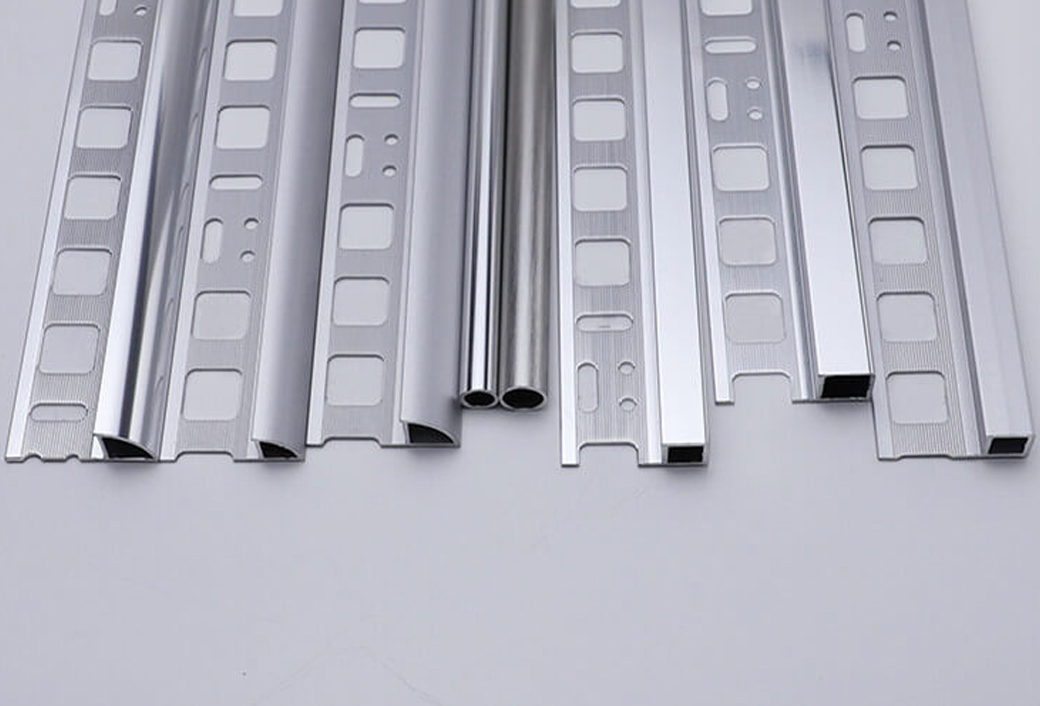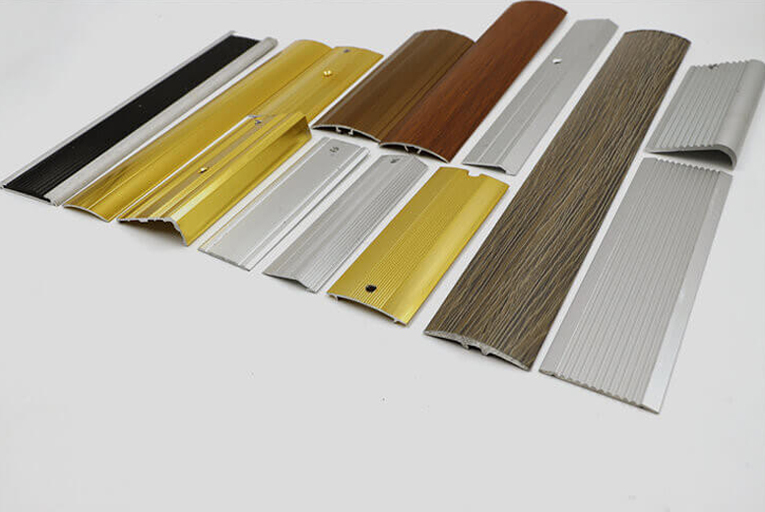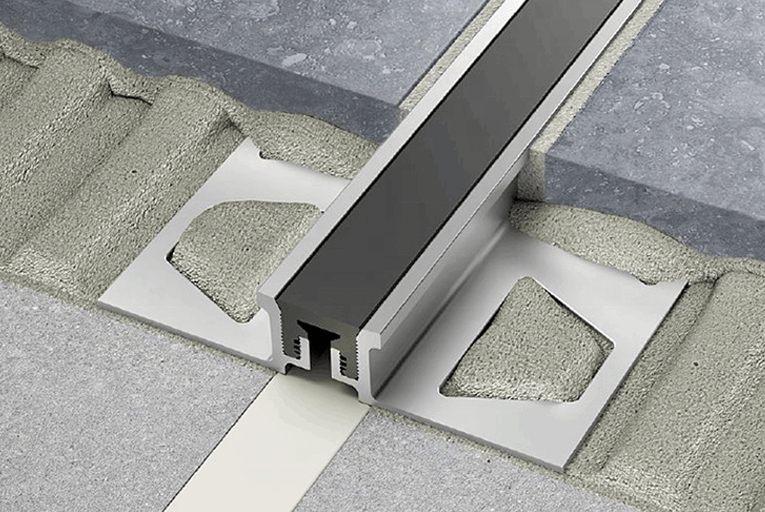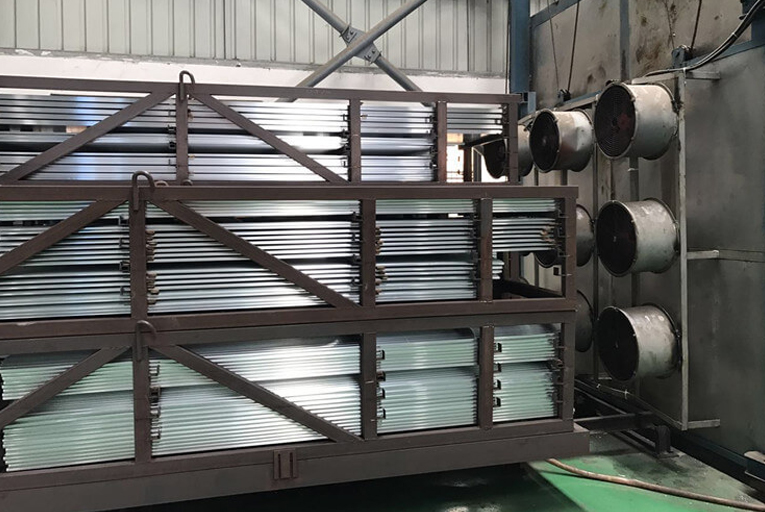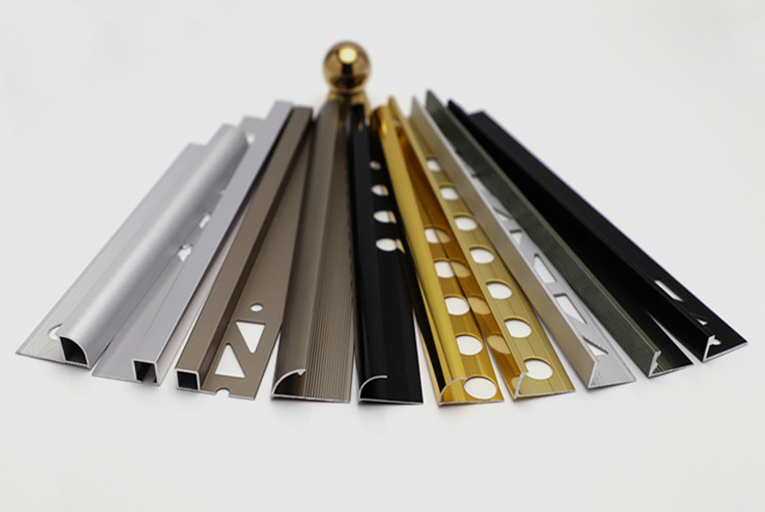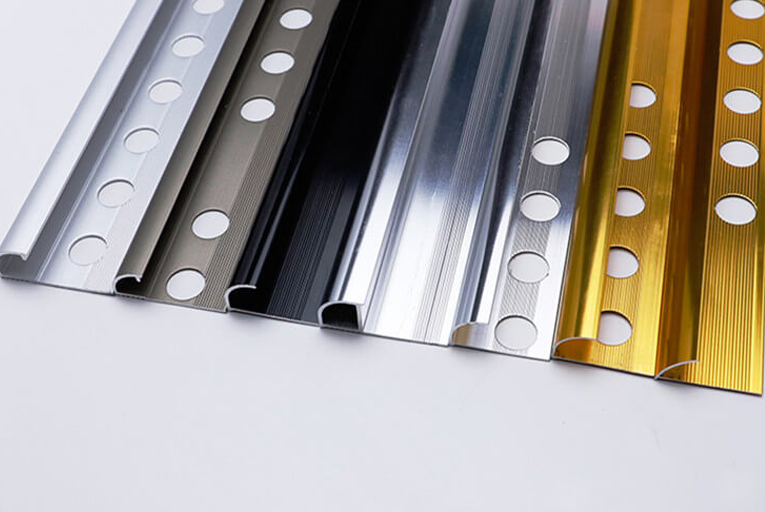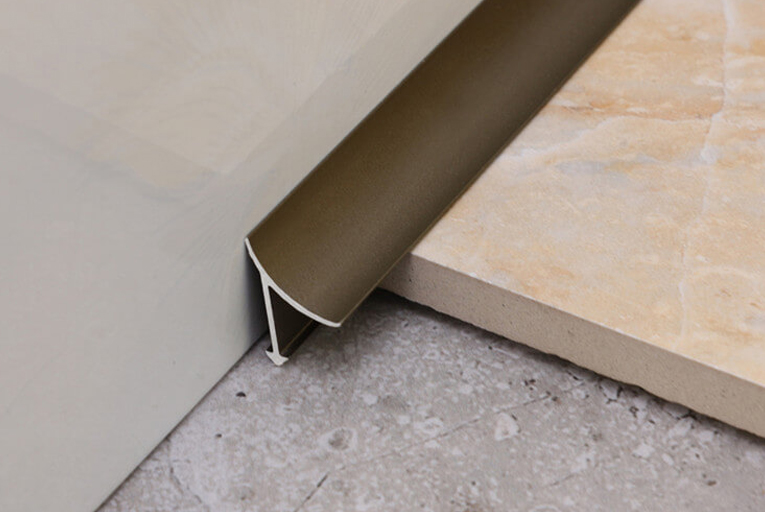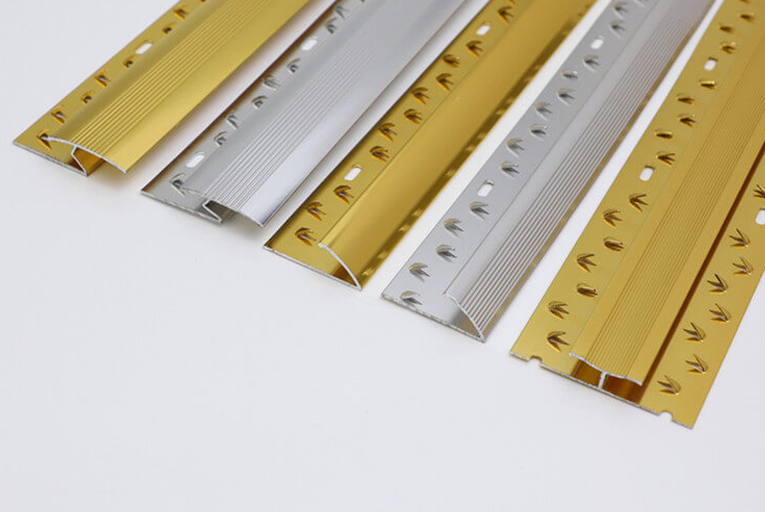4 Common Treatment Methods for Aluminum Tile Trim
1. Anodizing Treatment
Anodizing, the electrochemical oxidation of a metal or alloy. The process by which an oxide film is formed on aluminum products (anodes) by the action of an applied current under the appropriate electrolyte and specific process conditions for aluminum and its alloys. Anodic oxidation usually refers to sulfuric acid anodizing if not specifically specified.
Anodizing is an electrolytic oxidation process in which the surface of aluminum and aluminum alloys is usually transformed into an oxide film that has protective, decorative and some other functional properties. The anodizing of aluminum from this definition includes only the part of the process that generates the anodic oxide film.
Anodizing of aluminum profiles is actually a method of surface treatment of aluminum profiles. It is the formation of a layer of oxide film on the surface of aluminum profiles, which is elegant and beautiful and resistant to corrosion.
In order to overcome the defects in the surface hardness and wear resistance of aluminum alloy, expand the application range and prolong the service life, the surface treatment technology becomes an indispensable part of aluminum alloy use. The metal oxide film changes the surface state and performance, such as surface coloring, improving corrosion resistance, enhancing wear resistance and hardness, protecting the metal surface, etc.
2. Powder Coating Treatment
Powder spraying is the use of powder spraying equipment (electrostatic spraying machine) to spray powder coating to the surface of the workpiece, under the action of electrostatic, the powder will be uniformly adsorbed on the surface of the workpiece, forming a powder coating; powder coating after high temperature baking leveling.
The powder coating is cured by high temperature baking and leveling, and becomes the final coating with different effects (different kinds of effects of powder coating); the spraying effect of powder coating is better than the spraying process in mechanical strength, adhesion, corrosion resistance, aging resistance, etc., and the cost is also under the same effect of.
The cost is also below that of spray paint.
Powder coating uses the principle of electrostatic spraying to adsorb the dry powder onto the metal aluminum profile after the high temperature grilling above 200¡æ, the powder solidifies into a layer of solid and bright coating about 60 microns thick. It makes the surface of the product smooth and flat.
The uniform color has strong acid resistance, alkali resistance, impact resistance and wear resistance, and can withstand strong ultraviolet radiation and acid rain for a long time without coating chalking, fading and falling off. Powder coating aluminum profile can be used under normal conditions.
The life span is up to 30 years. The surface coating is guaranteed not to fade, change color or crack within 5-10 years. Its weather resistance and corrosion resistance are better than ordinary aluminum color diversification.
The product does not contain toxicity, solvent and volatile toxic substances, so there is no poisoning, no fire, no “three wastes” emissions and other public hazards, in full compliance with the requirements of national environmental protection law.
High utilization rate of raw materials, some well-known brands of powder suppliers to produce powder, its over spray powder can be recycled, the highest utilization rate can even reach more than 99%.
After the pre-treatment of the object to be coated, the one-time construction, without primer, can get sufficient thickness of the coating film, easy to achieve automatic operation, high production efficiency, can reduce costs.
Dense coating, good adhesion, impact strength and toughness, high edge coverage, excellent chemical resistance, and electrical insulation properties.
The powder coating is safe and convenient to store and transport.
3. Brushed Aluminum Surface Treatment
Surface brushing is a surface treatment that forms a line pattern on the surface of the workpiece by grinding the product to play a decorative effect. Because of its ability to reflect the texture of metal materials, surface brushing has become more and more popular and widely used by users.
The effect obtained by brushing will have a very fine convexity effect, but whether or not coloring is required, the surface oxidation treatment is usually required, the purpose of oxidation treatment is to get a protective film to prevent natural oxidation, and the surface hardness of the oxide film is also higher than the raw material, which can play a protective role, without coloring, you can choose colorless transparent anodic oxide film.
Brushed treatment is easier to process on flat surfaces, or curved surfaces with a small curvature can be done, but the processing quality is not well controlled when the curvature is larger. The brushing treatment is to be done after the stamping, which belongs to the surface treatment process. Wire drawing treatment can be made according to the decorative needs, such as straight, messy, threaded, corrugated and rotary patterns.
Straight wire drawing refers to the processing of a straight line pattern on the surface of aluminum by mechanical abrasion. It has the dual function of brushing away the scratches on the surface of aluminum sheet and decorating the surface of aluminum. Straight wire drawing has two kinds: continuous wire pattern and intermittent wire pattern. Continuous wire pattern can be obtained by continuous horizontal straight line rubbing on the aluminum surface by using a cleaning cloth or stainless steel brush. The diameter of the stainless steel brush can be changed to obtain different thicknesses of the pattern. Intermittent patterns are generally obtained by brushing or rubbing machines. Principle of production: Two groups of differential wheels rotating in the same direction are used, the upper group is a fast rotating grinding roller, and the lower group is a slow rotating rubber roller, aluminum or aluminum alloy material passes through the two groups of rollers and is brushed with a fine interrupted straight pattern.
Messy wire drawing is a kind of matte wire pattern without regular and obvious grain obtained by moving the aluminum plate back and forth and left and right under the brushing of copper wire running at high speed. This kind of processing has high surface requirements for aluminum or aluminum alloy plates.
The corrugation is generally made on the brushing machine or rubbing machine. Using the axial movement of the upper set of grinding rollers, the surface of the aluminum or aluminum material is brushed to produce a wavy pattern.
Rotary pattern, also called rotary light, is a kind of silk pattern obtained by using a cylindrical felt or nylon wheel of research stone mounted on a drill press and using kerosene to mix with polishing ointment to rotate and polish the surface of aluminum or aluminum. It is mostly used for decorative processing of round signs and small decorative dials.
The thread is made by using a small motor with a round felt on the shaft, fixing it on the table at an angle of about 60 degrees to the edge of the table, and making a drag board with a fixed aluminum press tea, to which a polyester film with a straight edge is attached to limit the thread competition. By using the rotation of the felt and the straight movement of the dragging board, a thread pattern of the same width is created on the surface of the aluminum by spinning and rubbing.
4. Polishing Surface Treatment
Polishing is a processing method that uses mechanical, chemical or electrochemical action to reduce the surface roughness of the workpiece to obtain a bright, flat surface. It is the finishing process of aluminum profile surface by using polishing tools and abrasive particles or other polishing media.
Mechanical polishing is to use the polishing wheel coated with polishing wax to process the surface of aluminum alloy shell. The purpose is to reduce the roughness of the aluminum alloy surface, so that the surface becomes smooth, bright or mirror effect, can effectively repair the aluminum alloy surface scratches and scratches.
Chemical polishing is the chemical etching of aluminum under specific conditions. In this etching process, the metal surface is eroded and leveled by the solution, thus obtaining a relatively bright surface. The advantages of chemical polishing is: no additional power supply, can handle the shape of more complex aluminum, high productivity, but the surface quality of chemical polishing, generally slightly lower than chemical polishing, the solution adjustment and regeneration is also more difficult, often in the polishing process will precipitate nitrogen oxide and other harmful gases.
Electrochemical polishing is also known as electrolytic polishing. Electrolytic polishing is to be thrown aluminum as the anode, insoluble metal as the cathode, the two poles are immersed in the electrolytic bath at the same time, through the direct current to produce selective anodic dissolution, so as to increase the surface brightness of aluminum profiles, to achieve the mirror effect. However, electrolytic polishing cannot remove the non-metal inclusions of aluminum profiles, nor can it remove or disguise the surface defects such as scratches and deep pockmarks on the metal surface.
-
The 6 Hottest Tile Trim Solutions for 2021
2022-02-09 -
How to Install Tile Trims Line?
2022-02-09 -
Difference Between Sandblasting and Anodizing Surface Treatment of Aluminum Tile Trim
2022-02-09 -
The Different Uses of Tile Outside Corner Edging Trim and Inside Corner Edging Trim
2022-02-09 -
The Most Popular 5 Different Materials of Tile Trim Line
2022-02-09 -
What is Carpet Cover Trim?
2022-02-09

